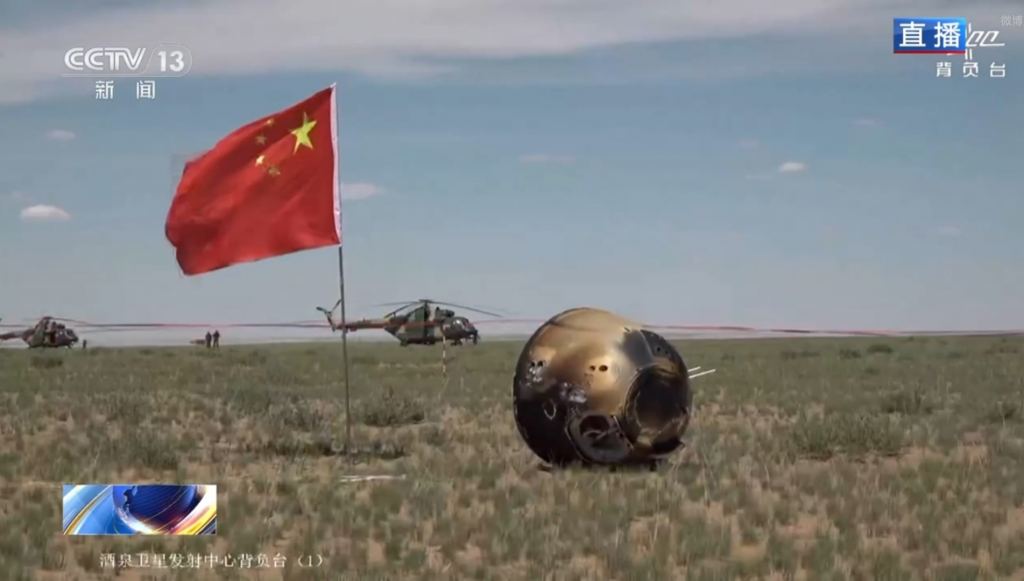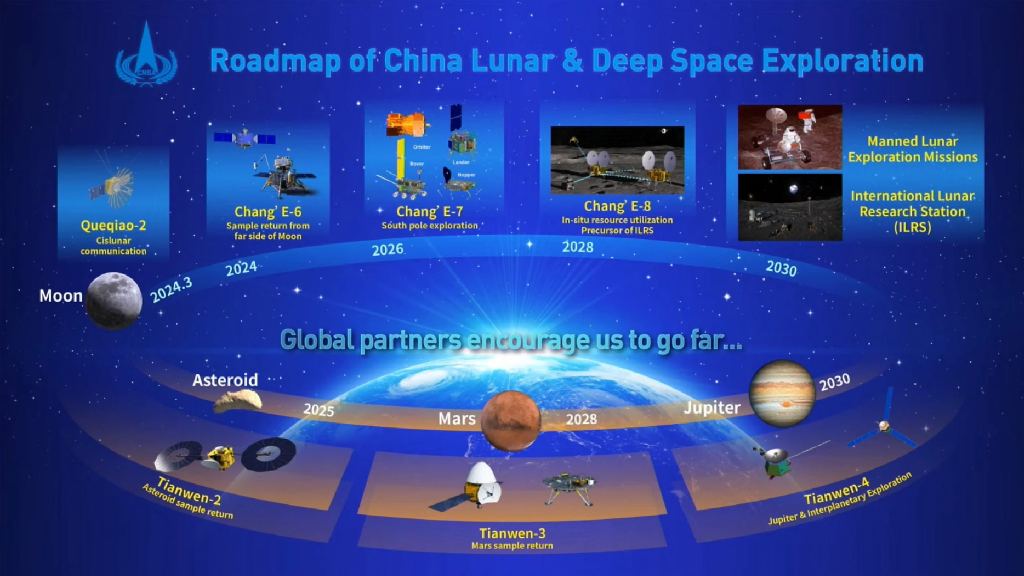While NASA's Mars Sample Return mission has experienced a setback, China is still moving forward with their plans to bring home a piece of the Red Planet. This week, officials from the China National Space Administration (CNSA) announced their sample return mission, called Tianwen-3, will blast off for Mars in 2028. It will land on the surface, retrieve a sample, and then take off again, docking with a return vehicle in orbit. They also announced another mission, Tianwen-4 will head off to Jupiter in 2030 as well as unveiling a conceptual plan for China's first mission to test defenses against a near-Earth asteroid.
The announcements were made this week at the second I nternational Deep Space Exploration Conference, also known as the Tiandu Forum, held in China. China says the conference promotes international cooperation for future large-scale missions.
As reported by CGTN, the English-language news channel of state-run China Global Television Network, the chief designer of the Mars sample return mission, Liu Jizhong said the Tianwen-3 mission will include international payloads, and China plans to share samples and data from the mission with scientists around the world. Liu also said the primary scientific goal of the Mars sample return mission will be searching for signs of life.
China's first Mars exploration mission, Tianwen-1 arrived at Mars in February 2021 and included an orbiter, a lander, and a rover named Zhurong. The orbiter imaged the entire surface of Mars and the rover found hydrated minerals which are likely associated with groundwater. Its success made China the third nation to successfully land a spacecraft on the surface of Mars.
While the reporting on Liu's speech didn't disclose many details of the proposed mission to Mars, a paper published in the fall of 2023 by the China Academy of Space Technology proposed a quadcopter similar to NASA’s Ingenuity that would be capable of collecting a sample weighing up to 100 grams and return it to a lander. Since the Zhurong rover mission has concluded and it was not capable of collecting samples for Earth return, the new Tianwen-3 mission would need to include the entire collection of spacecraft that would land, collect, and store the samples; then launch to orbit to return and dock to an orbiting spacecraft which would then head back to Earth and somehow drop off or land the samples.
But China recently achieved this feat at the Moon with their Chang'e-6 mission, which launched in early May, becoming the first robotic mission to land and lift off again from the Moon's far side, and also the first mission to bring dirt and rocks from the far side back to Earth. They also placed a lander on the near side of the Moon and brought back samples with Chang’e 5.
Meanwhile, NASA's proposal for a Mars sample return mission have been shelved for now, as costs were increasing and timescales were slipping creating a budget challenge. NASA is now reworking their plan for a simpler, less expensive and less risky alternative. The Perseverance rover has already collected and cached several samples for return.
China has been actively sharing their plans for upcoming space missions, including the asteroid mission, the Mars sample return and the mission to Jupiter. Along with their ambitious robotic missions, the CNSA announced in 2021 that they plan to send its first crewed mission to Mars in 2033 with goal to send regular missions to Mars and eventually build a base there. China also has their Tiangong space station which currently houses three astronauts on six-months stays.
Liu did say the efforts to include international payloads, and sample and data sharing -- as well as joint planning for future missions -- are "expected to enhance global synergy in the realm of deep space exploration."
China has approved four missions for planetary exploration, set to be completed within 10 to 15 years. The Tianwen-2 mission to a currently unnamed asteroid is scheduled for launch around 2025, and Tianwen-4 for Jupiter exploration is set for launch around 2030.
 Universe Today
Universe Today



